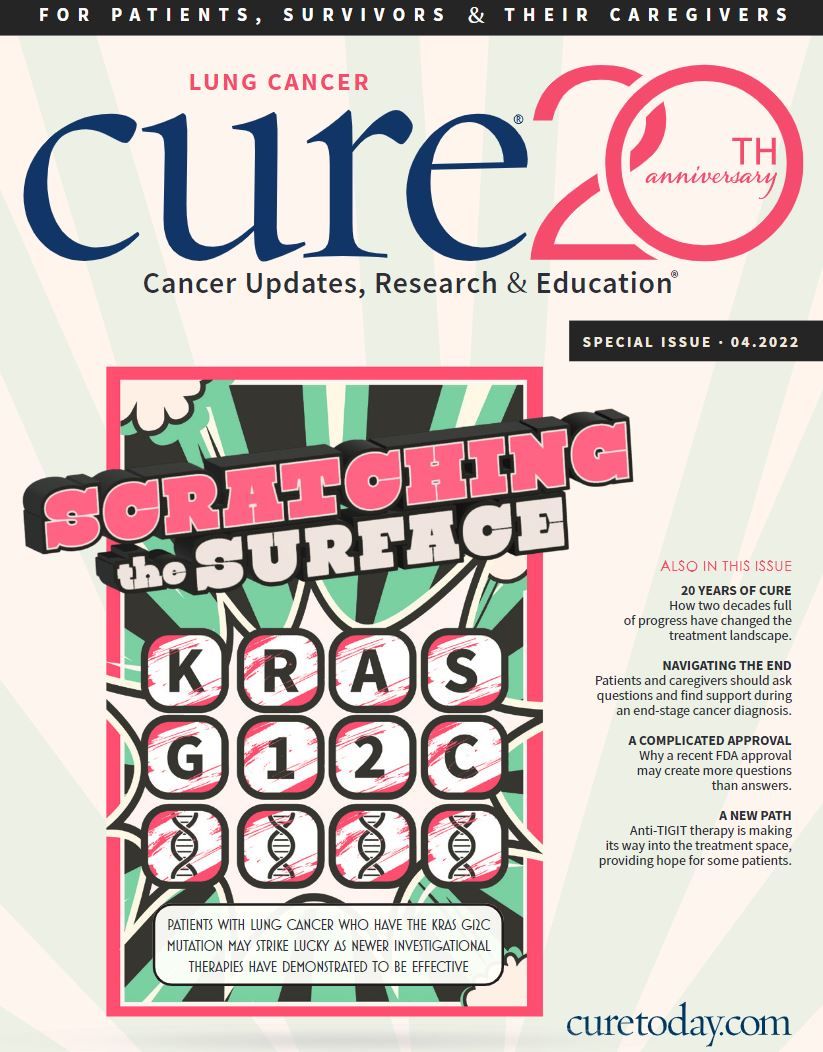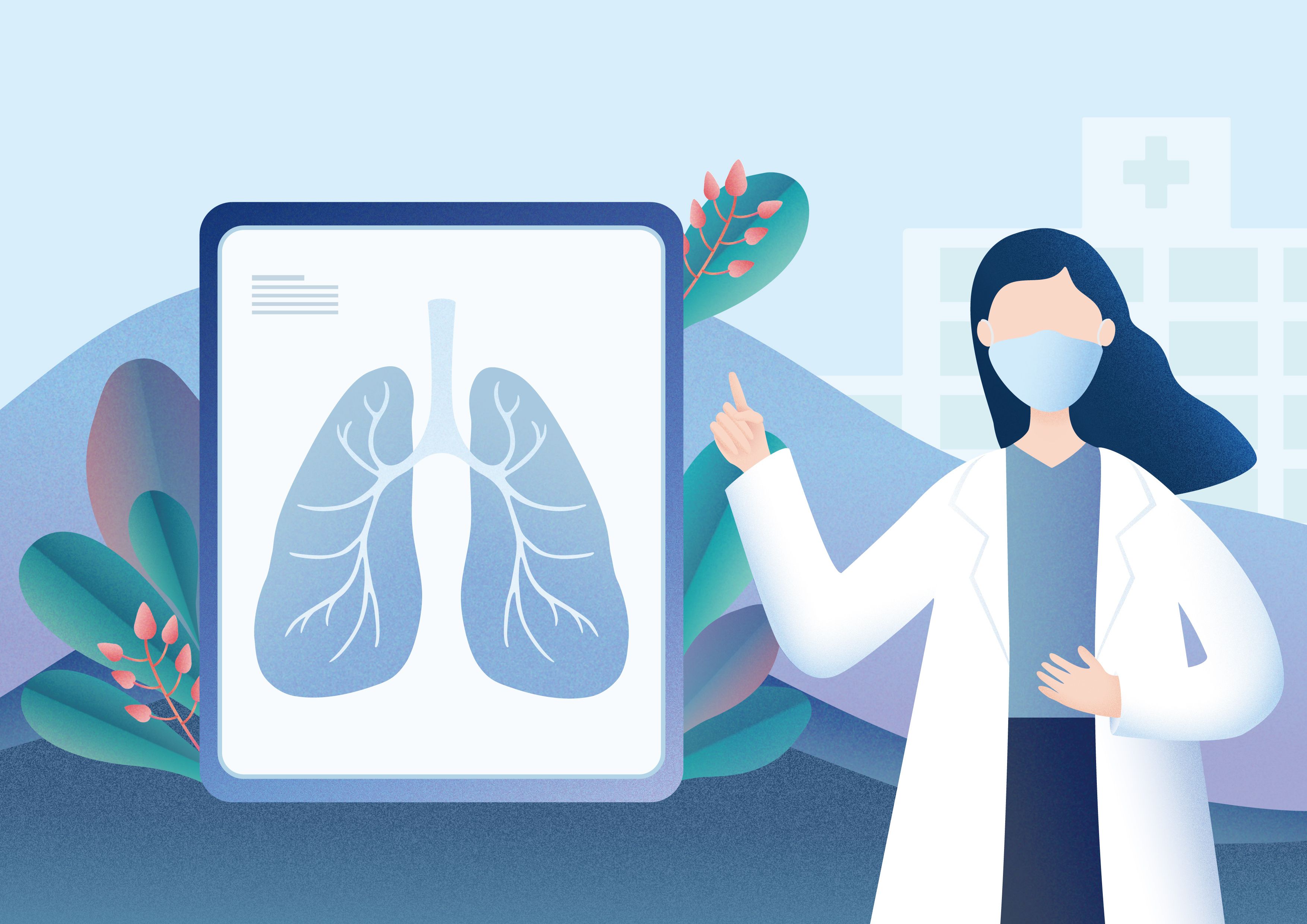Publication
Article
What Patients With Lung Cancer Don’t Know May Be Critically Important
Author(s):
Patients who are part of an advocacy group may be better equipped to understand biomarker testing during a lung cancer diagnosis and feel more empowered.
When it comes to understanding biomarker testing and its results, there is a gap between those patients in upper socio economic status (SES) levels who have a relationship with a lung cancer patient advocacy group and those who are from lower SES communities and may not yet be connected to the resources of advocacy organizations, according to recent survey results.
Biomarker testing (which can look for genes, proteins and other substances in the patient’s tumor tissue or blood) can provide information about a patient’s cancer and help guide treatment decisions, said Nikki Martin of the LUNGevity Foundation in an interview with CURE®.
The practice has become common in lung cancer management, with nine biomarkers that have targeted therapy drugs approved by the Food and Drug Administration in this setting.
“For (patients with) non-small cell lung cancer (NSCLC) biomarker testing is a critical piece of their care because it helps the provider select the most appropriate treatment for that patient’s type of lung cancer. ... Without that information, a patient and provider won’t know what is the most appropriate treatment,” said Martin, senior director of precision medicine initiatives at LUNGevity Foundation.
However, little is known about patients’ perception of biomarker testing — particularly those in low SES and medically underserved communities. According to a study of patients with NSCLC presented at the 2021 American Society of Clinical Oncology Annual Meeting, there is a gap of more than 10% in White patients receiving biomarker testing with next generation sequencing compared to Black patients.
LUNGevity (a lung cancer patient advocacy group) in partnership with Patient Advocate Foundation (a patient advocacy group providing financial advocacy and other resources for low income patients) surveyed patients with lung cancer to analyze their understanding of biomarker testing. Martin explained that the goal was to survey patients inside the LUNGevity network, who tend to represent patients from high SES communities, and patients outside their network with a focus on lower income patients, people with varying types of insurance including Medicaid and uninsured and people from more diverse racial backgrounds.
Martin explained that because many people in a disease-specific organization such as LUNGevity tend to represent higher income and White patient perspectives, it is important to understand the experiences, points of view and barriers that medically underserved communities are facing with biomarker testing. In addition to the survey, focus groups were conducted afterward to better understand the survey responses.
Understanding Testing
Regarding learning about biomarker testing, 66% of the patients from the LUNGevity group of respondents and 40% of those in the general population group reported having their doctor bring up the topic of biomarker testing. Additionally, 85% and 52% of patients from those groups, respectively, reported undergoing biomarker testing.
Of those patients, 78% and 54%, respectively, had to see only one doctor in order to have biomarker testing ordered for the patient. Results of the survey also demonstrated that patients from LUNGevity were more likely to have multiple mutations tested at a single time (55%) compared with those in the general population group (31%). Although testing for multiple mutations has a relatively long turn-around time, 46% of patients from LUNGevity received results within 14 days, compared with 34% of patients in the general population group.
The focus groups conducted after the survey revealed that the patients from LUNGevity were more likely to under-stand the term biomarker testing and what it entails, compared with those in the general population group. Patients in focus groups reported:
- “I heard of it (biomarker testing). Don’t know too much about it, just heard of it as far as the name. (It was) not discussed with me,” said a Black patient.
- “(It is) custom medicine. They take your tissue or blood, trying to look for these mutations to get your specific cancer under wraps. It’s really precision medicine. Customized to your specific cancer and can avoid chemo,” said a younger patient from an urban area.
Patients also reported that they did not know when biomarker testing was being done, because it blends in with other tests. One patient from a small, rural town said: “(I heard about it) during the first biopsy, my report had EKG, etc., and know from reading that they can treat you with targeted therapies. I didn’t know that they were doing it.”
Martin said these focus groups were eye-opening in that many patients did not know what biomarker testing was when asked — specifically those of lower yearly income (less than $50,000).
Understanding Results
Most patients in the LUNGevity (93%) and general population groups (76%) reported being informed of the results of their testing and a similar percentage reported that having access to these results was important. However, roughly half the patients reported not having results shared with them and less than a quarter of patients in both groups received a printed copy.
Additionally, 84% of patients from the LUNGevity group had their doctor explain the results, compared with 55% of patients in the general population group. And another 21% of those in the general population group had another health care professional explain the results to them. Although results were explained, only 65% and 56% of patients reported understanding the results in the LUNGevity and general population groups, respectively.
Focus groups confirmed the survey data that oncologists were the ones to explain biomarker testing and results. However, confidence in oncologists varied by patient ethnicity and age. Both younger and older patients from urban areas had the best connection with their oncologists, whereas patients of color, those from rural areas or who were low income reported not getting as much time with oncologists as desired, according to the focus groups. Patients specifically reported that:
- “The doctors see 10 patients a day. Each of us have different kinds of cancers. ... The person most likely to talk to you about biomarker testing is the person you spend the most time with and that’s in your treatment center. I spend 30 minutes with doctors. I spend six hours with the nurses in the immunotherapy treatment,” said one low-income patient.
- “The pulmonologist never mentioned biomarkers. I have to think if anyone knew, it was my oncologist who changed my chemo cocktail. I also had a radiation oncologist, but he didn’t do bloodwork, strictly scans. I assume my oncologist knew what my biomarker was. I would be interested to go back and ask him about that,” said another low-income patient.
Martin said this showed a clear gap between those who were involved in a patient advocacy group and those who were not.
“This underscored, not only is there an access issue in terms of having (biomarker testing) prescribed. But there’s also a communication gap in terms of how much information is being shared with patients to ensure they comprehend this critical, foundational piece of care,” she explained.
The Importance
Martin said it was clear that patients involved with advocacy groups have access to resources to expand their knowledge about testing and treatment, whereas those who are not yet part of such a group might not have an opportunity to get connected to resources and information that may benefit them.
“It’s clear that there were a lot of patients who were just learning about this as a part of participating in the focus groups,” she said.
Being educated on treatments and practices such as biomarker testing throughout one’s cancer journey can allow a patient to feel more confident when choosing next steps in treatment, Martin added. To feel more comfortable in that setting, Martin encourages patients to find an advocacy group that is the right fit and use it to their benefit. Groups often have resources and educational outlets that can help guide patients through their treatment journey.
Additionally, some people may benefit from talking to patients who have gone through similar journeys.
For those not involved in a patient advocacy group, Martin said, “It can be a chance to learn more about their care and become more empowered to ask their providers the right kind of questions that could maybe have some impact on making treatment decisions that could be a better fit for them.”
For more news on cancer updates, research and education, don’t forget to subscribe to CURE®’s newsletters here.
Tell us about someone making a significant positive impact in the lives of patients with lung cancer.Nominations for the 2022 Lung Cancer Heroes is open now through May 15! To submit, click here.




